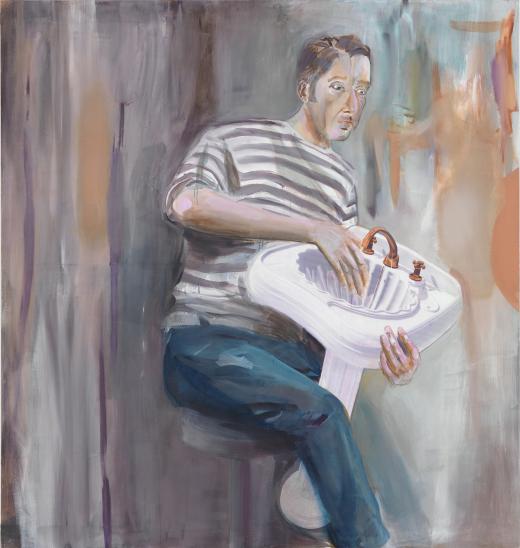SELF-PORTRAITS
Throughout his career, Albert Oehlen made a series of self-portraits where his very image acts as a starting point for reflection on the meaning of the artist’s art and identity.
With these works, the painter attempts to reach a balance between figuration and abstraction to question, through a classic genre, standards of the artistic practice and traditional cultural, aesthetic, and artistic imperatives.
In these self-portraits, the subject is not the most relevant aspect; rather, the theme becomes a means that allows the artist to express his ideas. Normally, Oehlen’s portraits are images made with a reduced color selection—with brown, ochre, and grey tones predominating—and are painted with a direct, gestural style, use a deliberately “anti-masterful” technique.
With Self-Portrait as Spring (Selbst als Frühling), 2006, Oehlen reinterprets a traditional pictorial theme, the celebration of spring and life, showing an idyllic scene where appearances are deceiving. A masculine character regards us, representing the painter himself, who replaces the god Bacchus; but he is not depicted as a joyful god, celebrating a happy moment. Rather, he has a mournful appearance. Oehlen occupies the place of the god, introducing himself as a creator—creator of the painting, but also as a destructor of the traditional meaning. The artist adds elements of life today, replacing wine with a bottle of beer and the grapevine grown with a white muscle shirt.
Oehlen uses his self-portraits as a tool to criticize the widespread belief that the painter is a sort of God. As such, he shows himself to be an artist who holds no control over himself or his work once it has left the studio.

